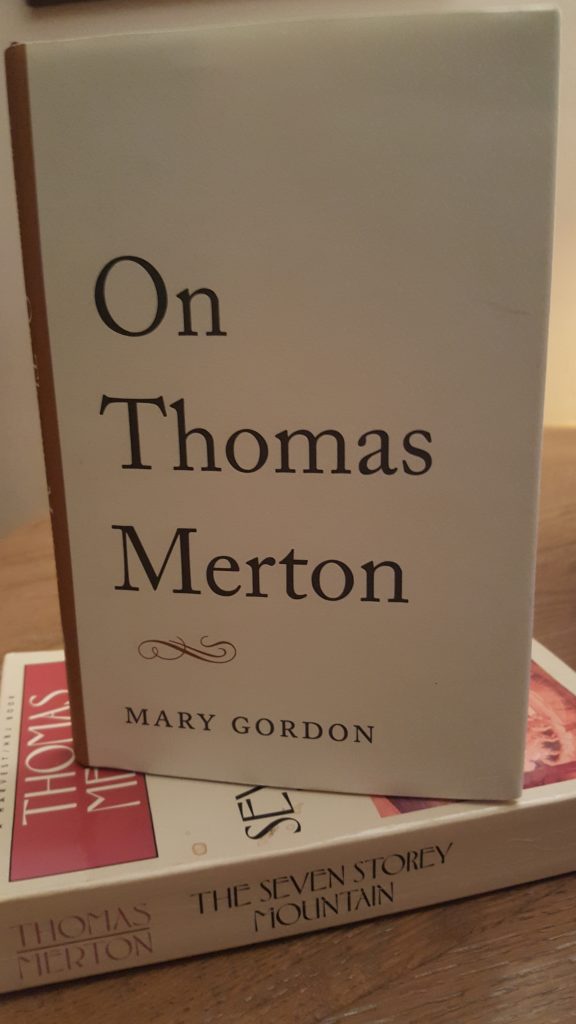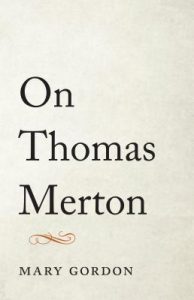On Thomas Merton
By Mary Gordon
Boulder: Shambhala, 2018
I’ve tried to like Thomas Merton, because as a priest and a writer, I feel pressure to admire him. Merton’s a popular saint in the Episcopal Church who made it to the Saintly Sixteen in Lent Madness five years ago (before losing to Charles Wesley). He’s beloved in Kentucky, where I’m pursuing an MFA. Gethsemani, the monastery where he lived for twenty-seven years, is located there. I’ve tried to read an old copy of Merton’s best-selling conversion narrative The Seven Storey Mountain a dozen times in the past twenty years, and finally forced myself to read his Intimate Journals as part of my MFA reading list. I feel guilty that I have failed to become enthralled by this man who embraced two vocations: writing and monasticism.
“If Thomas Merton had been a writer and not a monk, we would never have heard of him,” Mary Gordon asserts in the opening of On Thomas Merton; then, “If Thomas Merton had been a monk and not a writer, we would never have heard of him.” Gordon goes on to write that she was not impressed by Thomas Merton as a writer for decades; but then, as a Catholic writer, was asked to give a lecture opening a hundredth birthday celebration for Merton at the Columbia Rare Book and Manuscript Library, for which she threw herself into Merton’s work. After the lecture she was approached about this book, and decided to examine Merton writer to writer, exploring the question, “What kind of writer was he?”
The first chapter, “Writer to Writer,” introduces the question, and discusses Merton feeling pulled between his two vocations as a writer and monk. Gordon views the question through an exploration of his correspondence with two other writers, Evelyn Waugh and Czeslaw Milosz. The success of Seven Storey Mountain had attracted more postulants to Gethsemani than it could comfortably accommodate, so Merton felt pressure from his superiors to write for the monastery’s financial benefit. Waugh encouraged him to “leave mass production alone,” rather: “Never send off any piece of writing the moment it is finished… Say ‘No’ definitively to people who want you to do more than you can do well” (12). Waugh and Merton’s friendship fizzled, but Merton and Milosz remained friendly until Merton’s death. When Milosz offered feedback to Merton, he spent more time on content than style, and pushed Merton to write literary criticism.
The other three chapters explore Merton’s writing through the lenses of particular works, beginning with his most famous book, The Seven Storey Mountain. Gordon writes, “The triumphalist rhetoric, the boosterism, the Manichean self-loathing and hatred of the world and the flesh, and the cavalier dismissal of other faith traditions are difficult for a contemporary admirer of Merton’s to read” (42). The book highlights what Gordon sees as one of Merton’s writing strengths, his power of close observation; and Gordon further underscores her thesis about Merton’s struggle with his two vocations with her observation about the epilogue to Seven Storey Mountain, in which he expresses the struggle between his two callings, and points out how either the writer or the monk has to die, but his superiors won’t allow the writer to die.
After writing about Merton’s best-known work, Gordon chose one of his least-known writings for chapter three. The novel My Argument with the Gestapo was written in 1941, but became unpublishable after December 7th of that year, so he set it aside until January 1968, when Merton wrote in its introduction, “Obviously this fantasy cannot be considered an adequate statement about Nazism and war. The death camps were not yet in operation. … In the face of such things, this book could never have been written so lightly” (64). While this book has received little critical attention, Gordon finds that it works well with Merton’s writing gifts, and effectively captures subjects about which Merton was passionate: “the problem of war and violence, his particular calling as a writer, and his vexed identity as an American whose imagination had been formed in and marked by Europe” (68). Merton had destroyed four other books he wrote before entering Gethsemani, but held on to this one. Gordon argues that had Merton continued to write in the vein of this book, he could have been marginalized; but the success of Seven Storey Mountain set him on his path as a writer-monk, the identity which made him famous.
Gordon was captivated by Merton’s journals, the focus of her fourth chapter, and admits that she regrets she did not read them earlier. Rather than reading the various collections of Merton’s journals that exist, Gordon studied them chronologically, seeking constant themes as well as areas of development. His gift for description shines throughout the journals, and his human contradictions play out in them. Gordon was especially drawn to his writing about Gethsemani and his fraught relationship with the Trappist monastery: “Merton’s ideal of monasticism was European, and his dissatisfaction with Gethsemani was always in direct proportion to its failure of this ideal, and the extent to which it seemed saturated by American vulgarity” (100). Gordon points out that Merton’s writing about Gethsemani is neither comic nor tragic. His accidental death took place across the world from Gethsemani. How would his relationship with the monastery have persisted, had he lived?
On Thomas Merton may not appeal to adoring fans of Merton, but those fascinated by his identity as a writer-monk will enjoy it, and those of us who are interested in Merton but who have trouble engaging with his writing will find this slim volume ideal. After reading it I’m still not sure that I can ever make it through Seven Storey Mountain, but I want to try one more time, mostly due to Gordon’s description of the epilogue. I will definitely read more books by Mary Gordon.
Elizabeth Felicetti is the rector of St. David’s Episcopal Church in Richmond, Virginia, and reviews books for Episcopal Café, Kirkus Reviews, and the Christian Century.


